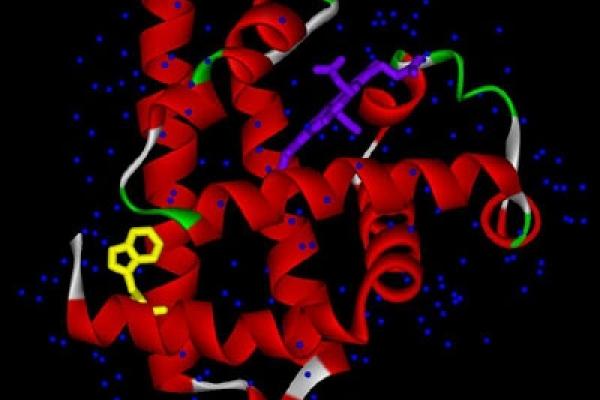
1:00-2:00 Enzymes stepping on landmines
Steve Pressé, Indiana University - Purdue University Indianapolis
Fluorescence correlation spectroscopy (FCS) is a powerful tool that is poised to reveal in quantitative detail the diffusional dynamics of single molecules in living systems. We will first show how complex models of transcription factor diffusional dynamics can be inferred from FCS data in living systems in the crowded, and often heterogeneous, environment of the cell's nucleus. Next, we will focus on recent work – in collaboration with experiments – where we investigated the effects of catalytic heat on an enzyme itself using FCS. In particular, we will consider strongly exothermic enzymatic reactions begging the question: how do enzymes cope with the destructive self-generated heat released from their own catalytic reaction that often exceeds in one second – by many orders of magnitude – the energy required to unfold a protein? We will show how modeling of FCS experiments ultimately reveals that enzymes rapidly dissipate heat by transiently accelerating their center of mass (COM) immediately following a catalytic reaction.
2:20-2:30 Information about the Council of Graduate Students
Roger Anderson, Council of Graduate Students
2:30-3:00 Mapping cellular Fe-S cluster uptake and transfer pathways
Insiya Fidai, Christine Wachnowsky, James A Cowan, Cowan lab
Iron-sulfur clusters play many essential roles in vivo, such as electron transport, transcriptional and translational regulation, and substrate binding and catalysis; however, the assembly of iron-sulfur clusters in vivo is not fully understood, since iron and sulfide ions are toxic. Also mutations in a variety of putative intermediate scaffold proteins can cause multiple mitochondrial dysfunctions syndrome, sideroblastic anemia and mitochondrial encephalomyopathy. Multiple pathways exist for iron-sulfur cluster biosynthesis, since these clusters are necessary for cell survival. Some of the protein partners in the pathways have been determined, but mechanisms of cluster biosynthesis, transport, and exchange are not well understood. In recent years, our lab has identified a hydrolytically stable glutathione-complexed iron-sulfur cluster that is formed and stable under physiologically relevant conditions. This glutathione-bound form of a [2Fe-2S] cluster can be taken up by the iron-sulfur cluster scaffold protein ISU and exhibits exchange with free glutathione. Hence, we have proposed that this novel iron-sulfur cluster species exists as a free pool in the cell and acts as a substrate for transport by membrane proteins. To better understand the mechanistic details of cluster assembly, transfer and trafficking and define the cellular cluster transport and exchange pathways, we are seeking to identify the most physiologically relevant trafficking pathways based on quantitative evaluation of cluster transfer between pairs of putative protein partners using spectroscopic and kinetic assays.
